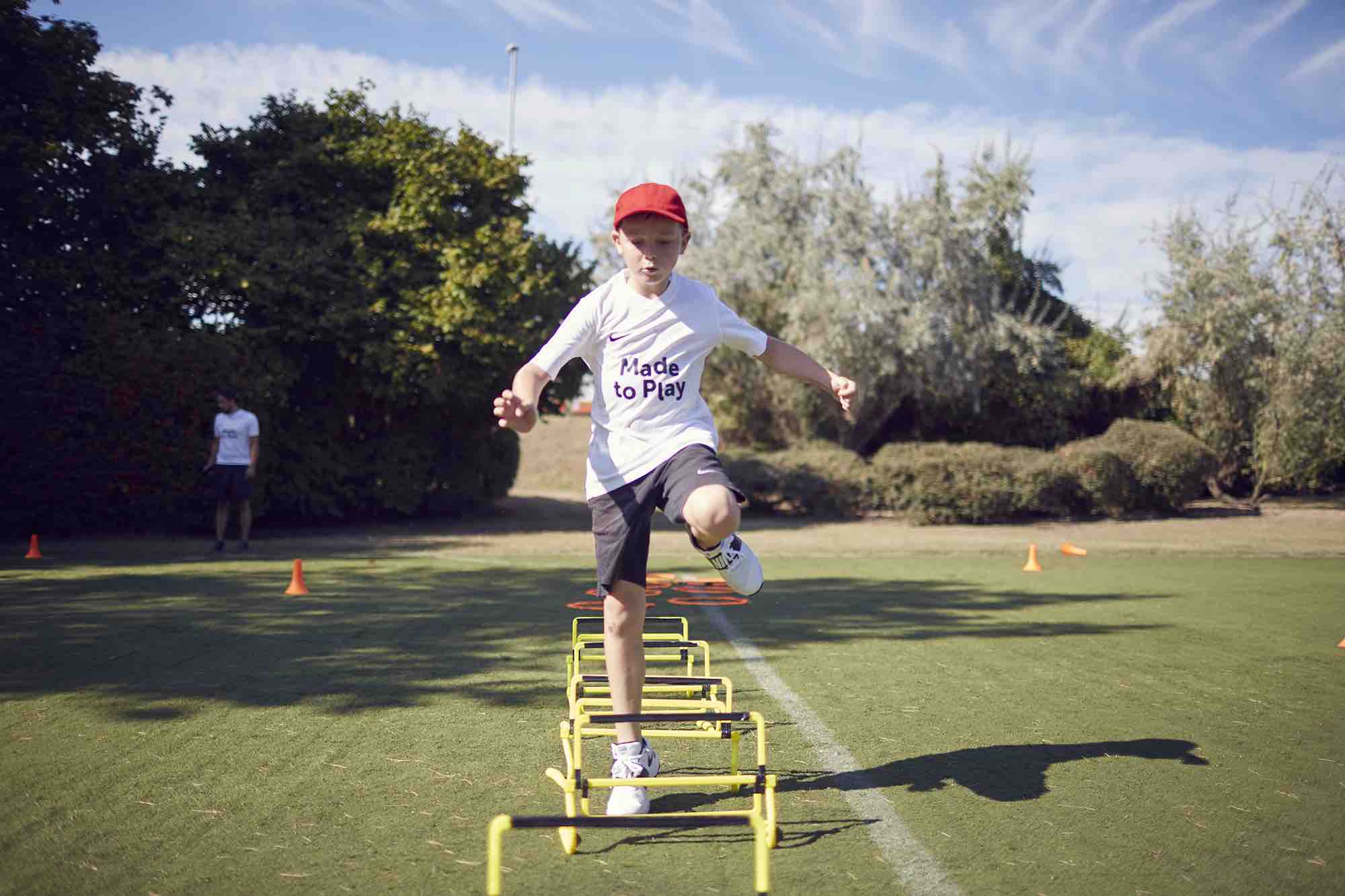
EMOTION MANAGEMENT
ISSUES RELATED TO THE THEME
In children, the relationship to emotions is progressive. The 6 primary emotions (joy, sadness, disgust, fear, anger and surprise) appear from the first year after birth. Secondary or mixed emotions appear between the 15th and 24th month, when the child becomes aware that he or she is a full person, and new emotions appear (e. g. gene, jealousy). During the third year, the child experiences new secondary emotions that require an understanding of rules, norms and objectives to be achieved (e.g. guilt, pride). This process of evolution of the relationship to emotions then continues until adolescence. It is possible that the child may perceive and interpret situations differently from one year to the next. Managing emotions can result in the development of what is called "emotional intelligence".
The development of emotional competence (or intelligence) requires the development of 3 components: knowledge of the different emotions, the ability to express emotions, and finally the ability to respond in an appropriate way to emotions. For the child to be able to better manage his or her emotions, he or she must develop this skill as a whole. For the ITEP public, all these phases can be problematic. Often, they do not react or hurt to the emotions they feel, and confuse the social codes associated with each of the emotions (smiling when you are happy, crying when you are sad...). They regularly find themselves in situations of suffering, in situations of violence for themselves or with others, or in situations of inappropriate behaviour.
Sesionet
Sesionet
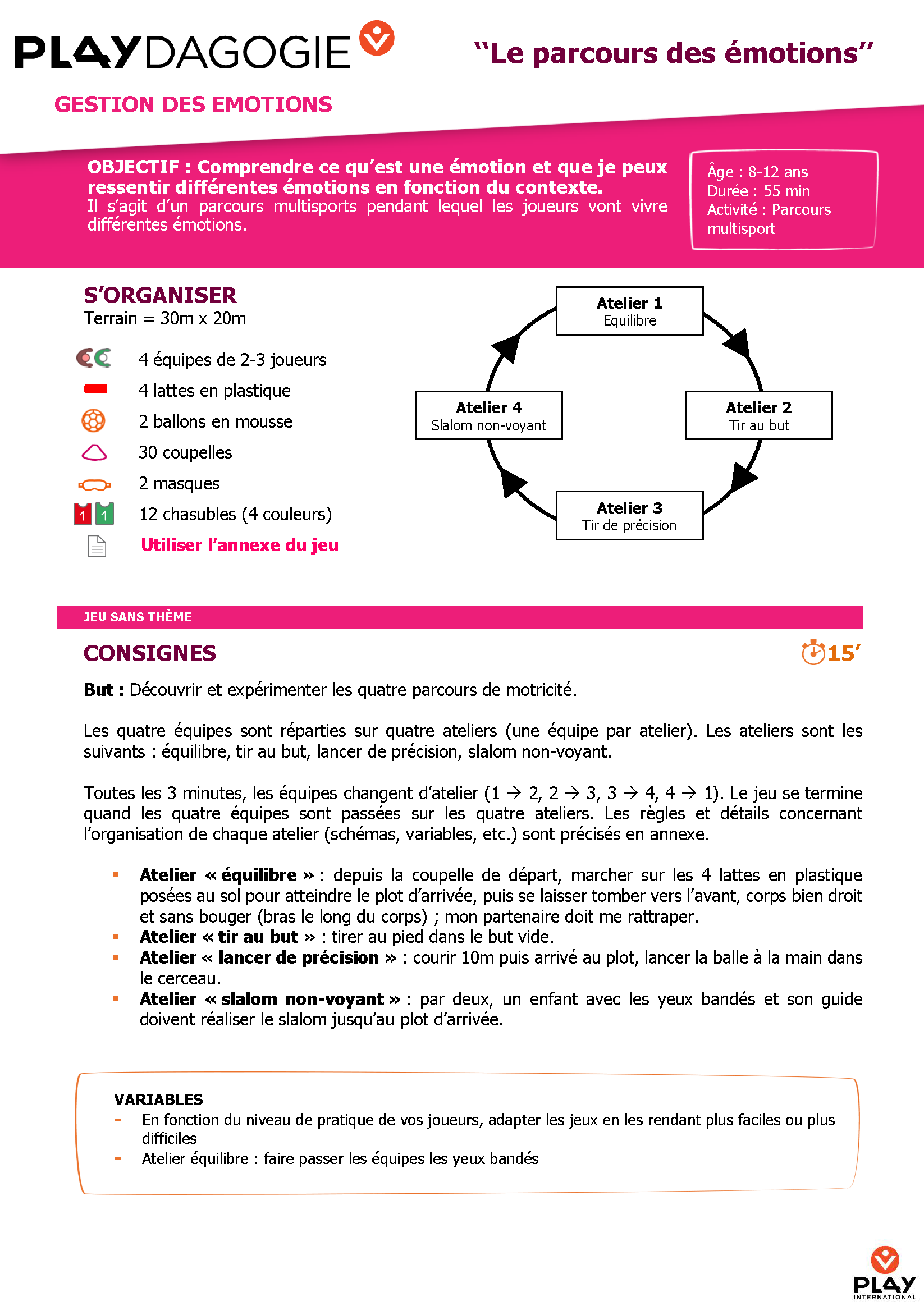
Parcours multisports pour permettre aux enfants de comprendre ce qu’est une émotion, et qu'ils peuvent ressentir différentes émotions en fonction du contexte.
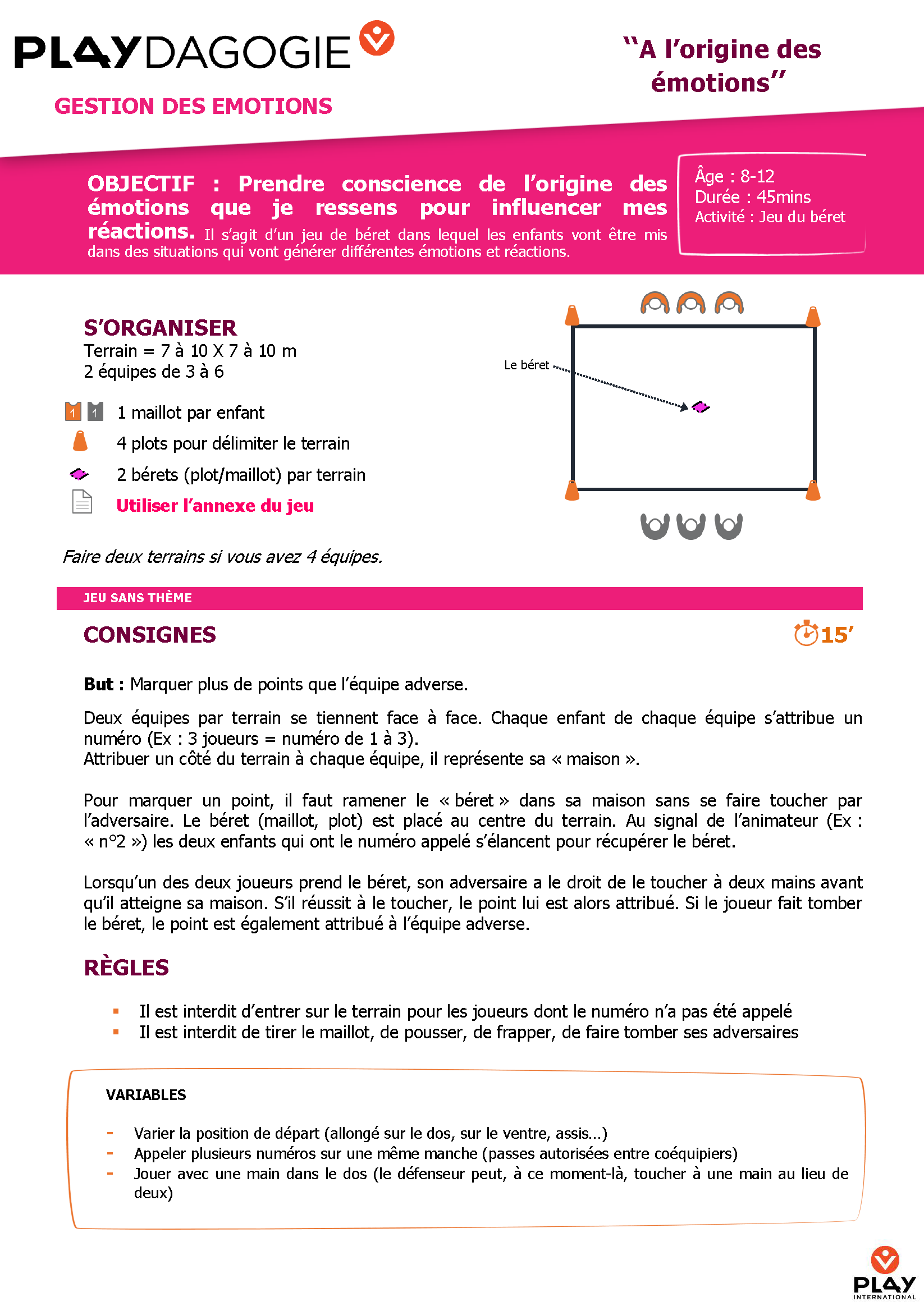
Jeu traditionnel afin de permettre aux enfants de prendre conscience de l’origine des émotions qu'ils ressentent pour influencer mes réactions.
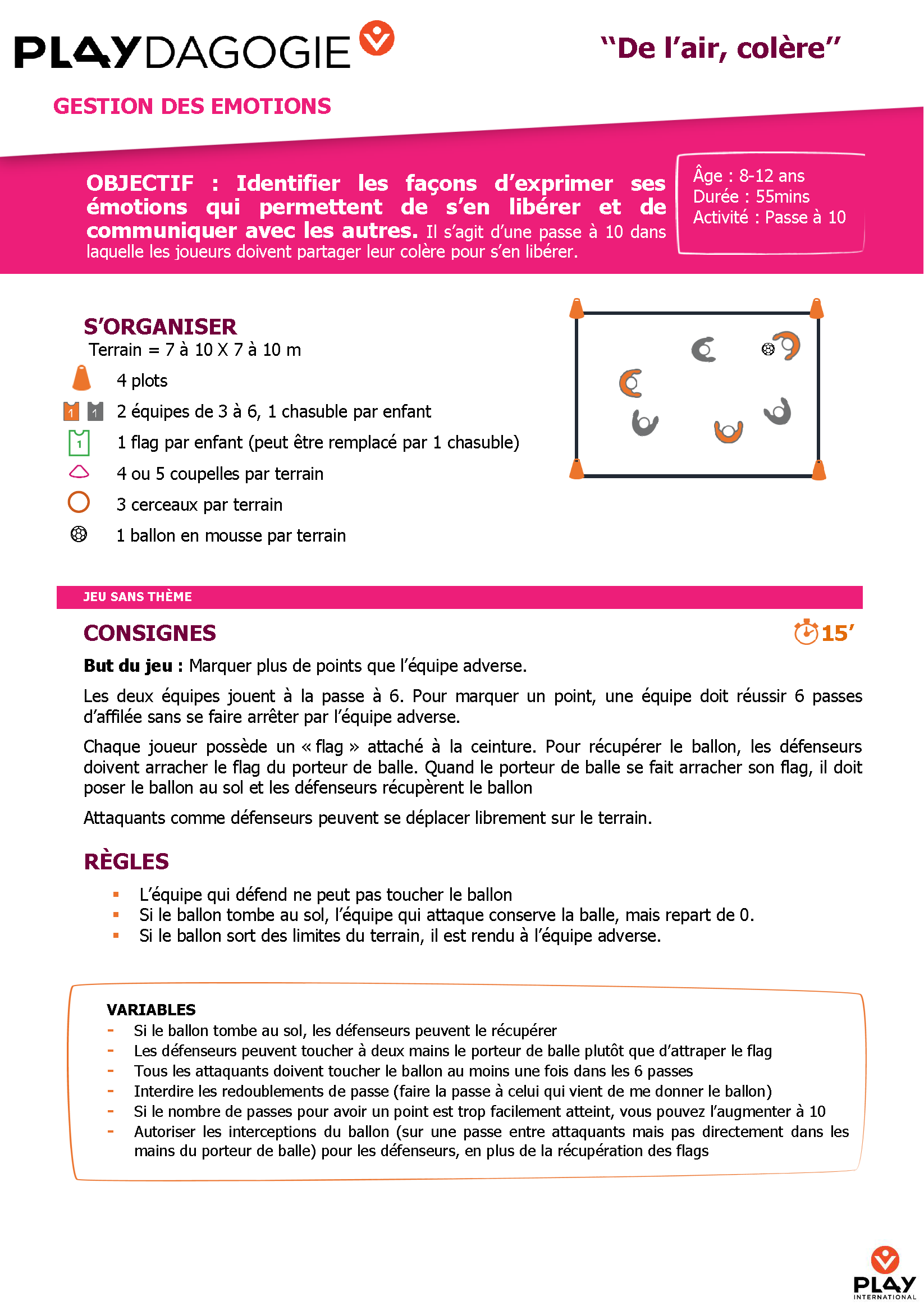
Jeu traditionnel pour permettre aux enfants d'identifier les façons d’exprimer leurs émotions qui permettent de s’en libérer et de communiquer avec les autres.
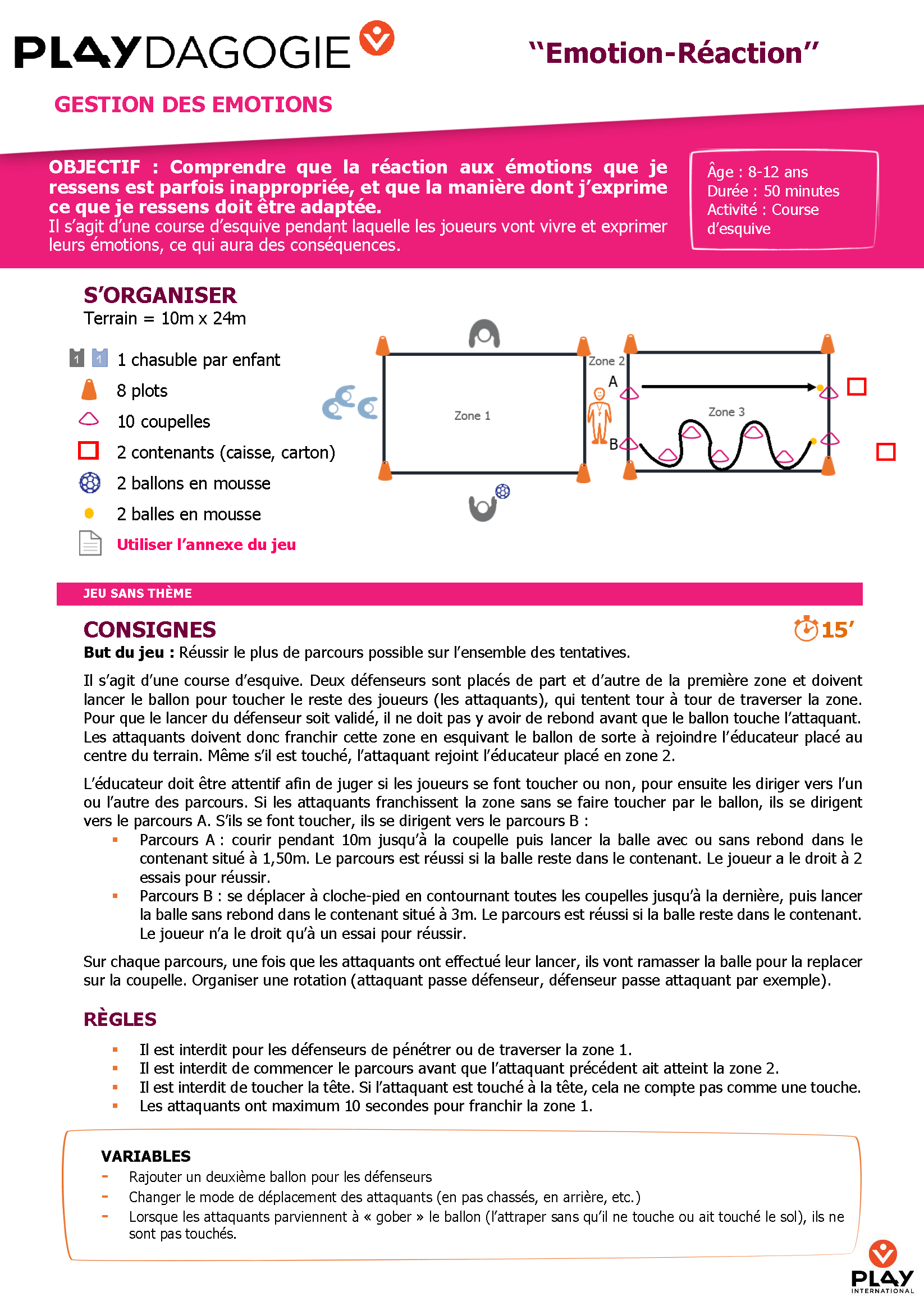
Jeu traditionnel de course et d'évitement pour permettre aux enfants de comprendre que la réaction aux émotions qu'ils ressentent est parfois inappropriée, et que la manière dont ils expriment ce qu'ils ressentent doit être adaptée.
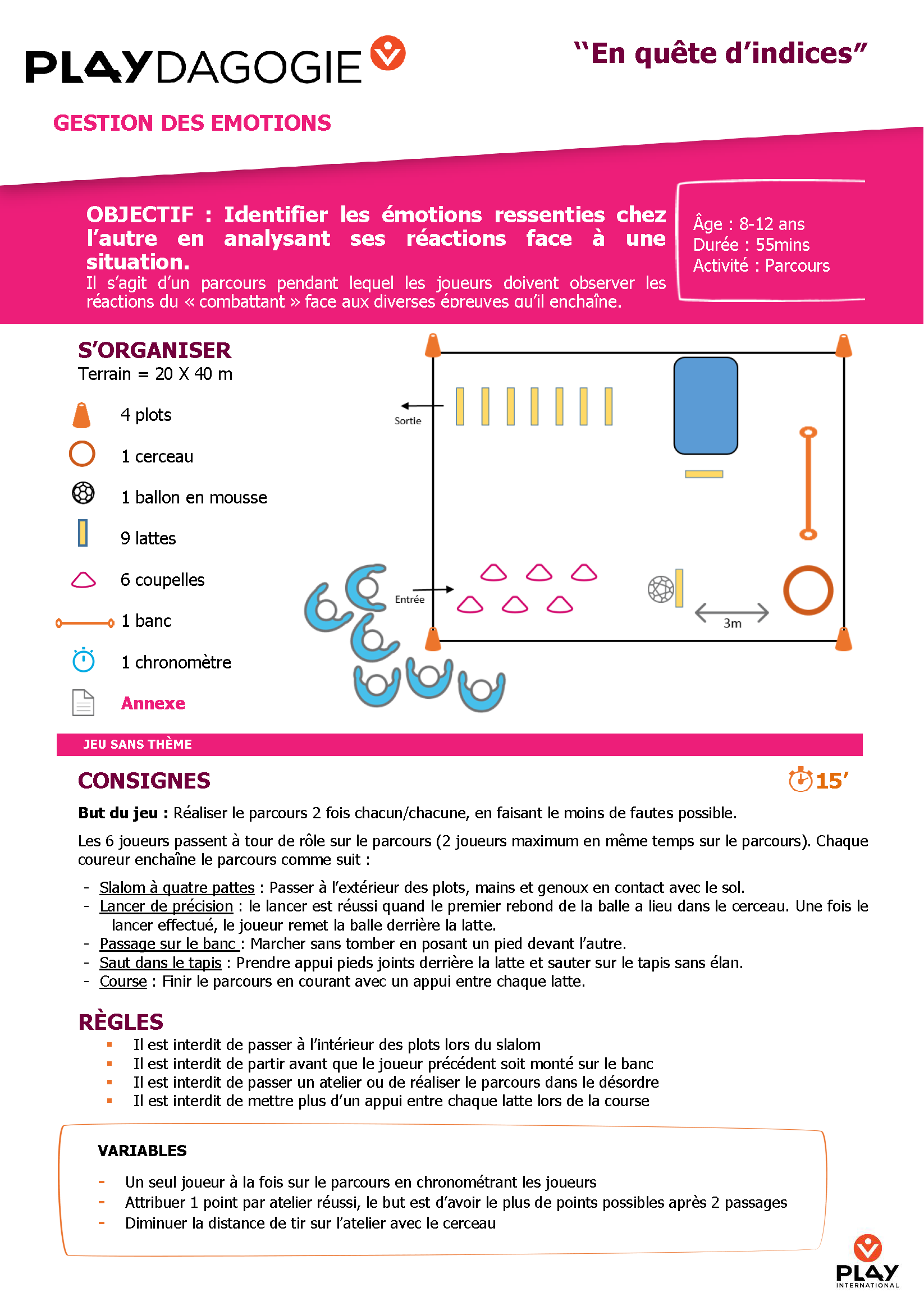
Parcours afin de permettre aux enfants d'identifier les émotions ressenties chez l’autre en analysant ses réactions face à une situation.
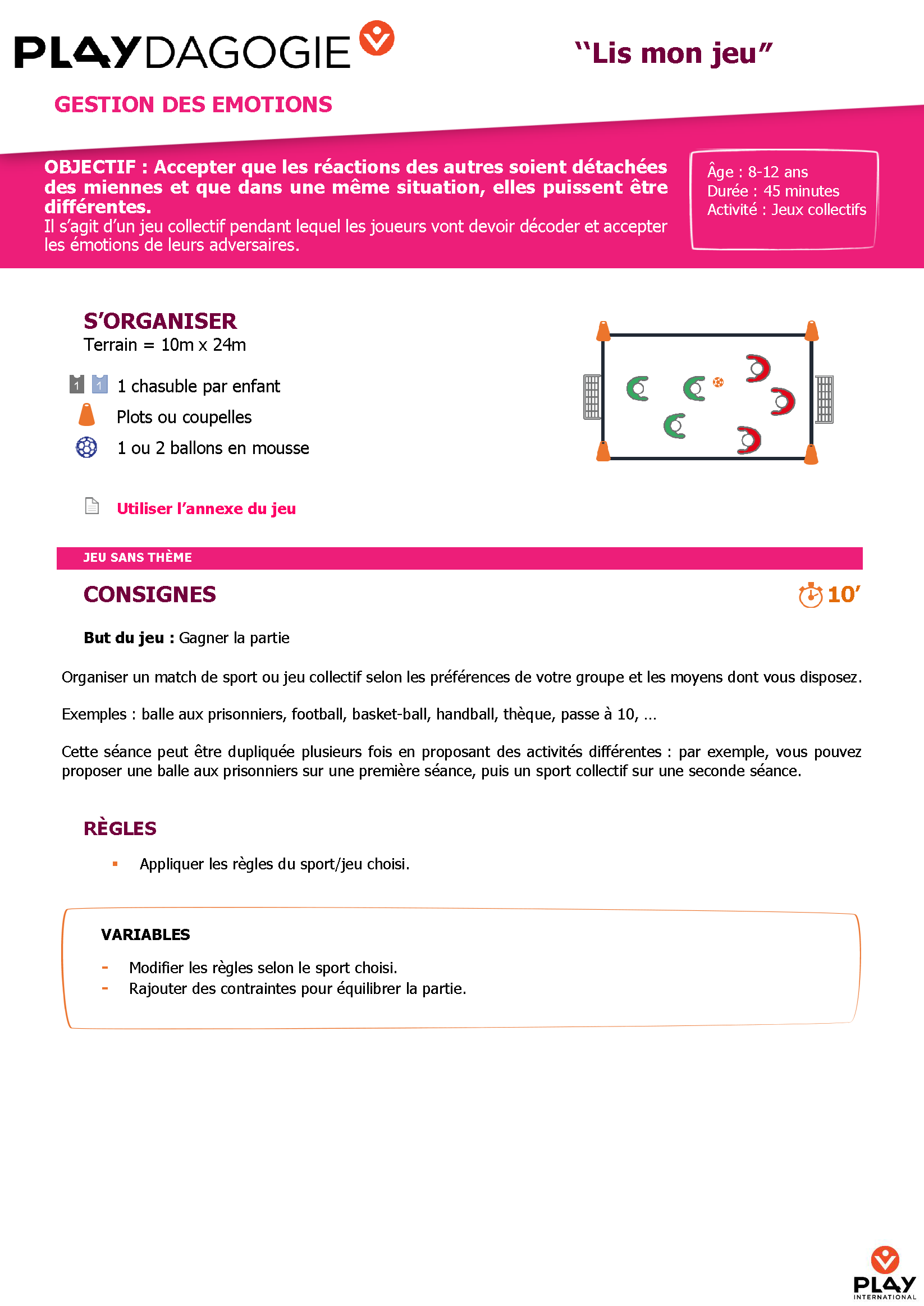
Jeu collectif pour permettre aux enfants d'accepter que les réactions des autres soient détachées des leurs et que dans une même situation, elles puissent être différentes.
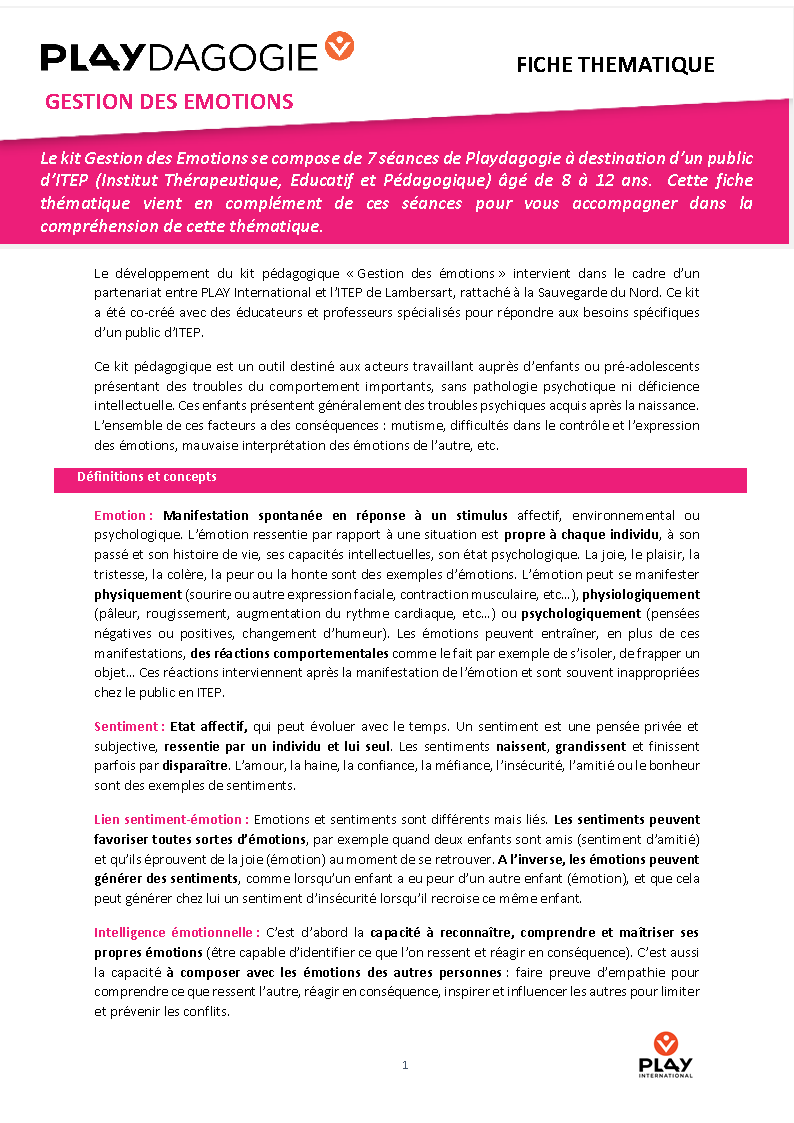
La fiche thématique Playdagogie Gestion des émotions présente le contexte, les enjeux et les notions clés liés à la thématique pour accompagner les enfants.
Download kit
Ressources
Pour aller plus loin
Pour les adultes
Naître et Grandir
Consulter le site
La roue des émotions de Robert Plutchik
Consulter le site
Suggestions d’outils pour expliquer les émotions aux enfants
Consulter le site
Comité National Coordination Action Handicap
Consulter le site
Livre « Pour une enfance heureuse », Catherine Gueguen
Livre « Intelligence émotionnelle », Daniel Goleman
Avec les enfants
Les émotions primaires
Voir la vidéo
« C’est pas sorcier : Joie, Peur, Tristesse, Colère… »
Voir la vidéo
Emilie Durette et Raka Khandokar
Voir la vidéo
Ressource pédagogique : « Le cartable des compétences psychosociales »
Consulter le site
Jeu de mime des émotions primaires et secondaires : « La battle des émotions »
 FR
FR EN
EN